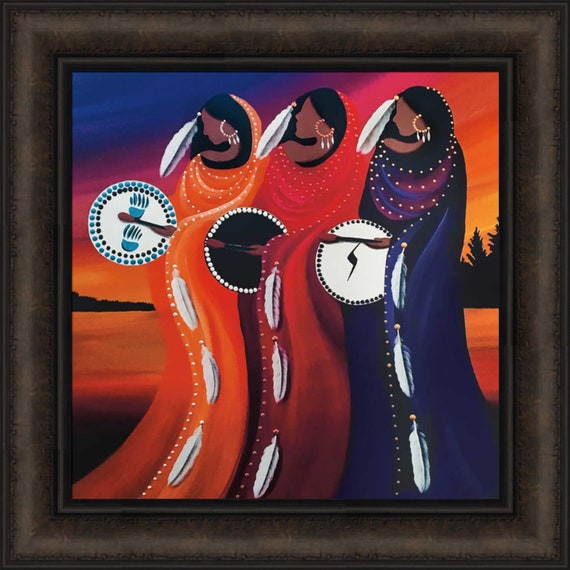“Calling in a Bull Moose” involves using various vocalizations to attract the animal for hunting. This method requires skill and patience.
Deep in the wilderness, hunters have been utilizing these techniques for generations to enhance their chances of a successful hunt. The art of calling in a bull moose is both challenging and rewarding, requiring a keen understanding of the animal’s behavior and habitat.
By mastering these vocalizations, hunters can create a realistic and convincing call that may draw in a curious bull moose. We will explore the techniques and strategies involved in calling in a bull moose, providing valuable insights for those looking to improve their hunting skills in the wild.
The Bull Moose: Majestic Wildlife
The Bull Moose, with its imposing size and majestic antlers, stands as a symbol of wilderness grandeur.
The Bull Moose prefer dense forests and wetlands, feeding on aquatic plants and twigs.

Credit: www.etsy.com
Understanding Moose Vocalizations
When calling in a bull moose, it’s crucial to comprehend the various vocalizations these majestic creatures use to communicate.
Types Of Calls
- Moose produce three main types of calls: grunts, bellows, and rumbles.
- Grunts are short, low-pitched sounds often used as a sign of aggression or dominance.
- Bellows are long, loud vocalizations primarily heard during the mating season to attract mates.
- Rumbles are deep, resonant calls moose use for maintaining contact with other members of their herd.
Interpreting Communication
- Understanding moose vocalizations can help hunters gauge the animal’s mood and intentions.
- Grunts may indicate a dominant bull moose asserting its territory, while bellows suggest mating activity nearby.
- By listening attentively to the nuances in their calls, hunters can predict moose behavior accurately.
Mastering The Moose Call
When it comes to calling in a bull moose, mastering the moose call is an essential skill that can make the difference between a successful hunt and a missed opportunity. Mastering the Moose Call involves not only selecting the right call but also using the proper techniques to create an authentic and convincing sound that will attract a bull moose. In this section, we will delve into the key aspects of mastering the moose call, including selecting the right call and techniques for authenticity.
Selecting The Right Call
The first step in mastering the moose call is selecting the right call for the job. There are various types of moose calls available, including diaphragm calls, external reed calls, and grunt tubes. Each type of call has its own unique sound and characteristics, so it’s essential to choose one that you feel comfortable using and that can produce the desired moose vocalizations. When selecting a moose call, consider factors such as durability, ease of use, and the specific vocalizations it can produce.
Techniques For Authenticity
Authenticity is crucial when it comes to calling in a bull moose. To create a convincing moose call, you must master the techniques for authenticity. This involves understanding the various vocalizations of a moose, including grunts, mews, and bellows, and practicing to mimic these sounds accurately. Realism and consistency are key factors in producing an authentic moose call that will effectively attract a bull moose. Experiment with different techniques, tones, and volumes to find the approach that works best for you.
Choosing The Ideal Location
In the thrilling sport of calling in a bull moose, selecting the perfect location for your hunt is vital to your success. Whether you are a seasoned hunter or a beginner, understanding the environmental considerations and optimal timing can greatly improve your chances of attracting the majestic bull moose.
Environmental Considerations
When it comes to choosing the right location for your moose call, certain environmental factors must be taken into account. These factors include:
- The presence of food sources such as willows, birch, and aquatic plants that attract moose
- The availability of water sources nearby, as moose are often found in close proximity to lakes, rivers, and marshes
- The presence of suitable habitat, including dense vegetation for cover and open areas for visibility
- The elevation and terrain of the area, as moose tend to prefer lower elevations with flat or gently sloping landscapes
Optimal Timing
Timing is crucial when it comes to calling in a bull moose. To increase your chances of success, consider the following:
- Mating season: Moose are most responsive to calls during the rutting season, which typically occurs in late September to early October. This is when bulls are actively searching for mates and are more likely to respond to the calls of a potential rival.
- Time of day: Early morning and late afternoon are prime times for moose activity. Set up your calling spot during these times to maximize your chances of attracting a bull moose.
- Weather conditions: Moose prefer cooler temperatures, so hunting during the cooler parts of the day or on overcast days can be advantageous. Additionally, moose are more active during calm weather conditions, as strong winds can make it difficult for them to hear your calls.
- Phase of the rut: Depending on the specific phase of the rut, moose may respond differently to calls. In the early stages, bulls are more likely to come in cautiously, while in the later stages, they may be more aggressive and responsive to aggressive calls.
By considering these environmental factors and optimizing your calling timing, you can dramatically increase your chances of calling in a bull moose. Remember, patience and persistence are key in this exhilarating pursuit. Happy hunting!
Safety Precautions And Ethics
When it comes to calling in a bull moose, it is important to prioritize safety and ethical practices. Respecting wildlife and being aware of our surroundings are fundamental aspects of any outdoors adventure. By following these safety precautions and ethical guidelines, we can ensure a positive experience for both humans and wildlife.
Respecting Wildlife
Respecting wildlife is crucial when engaging in activities such as calling in a bull moose. These majestic creatures deserve our utmost respect, and it is our responsibility to ensure their well-being. Here are some essential guidelines to keep in mind:
- Do not approach the moose too closely. Observe them from a safe distance to avoid causing stress or feeling threatened.
- Avoid making sudden movements or loud noises that could startle the moose. Maintaining a calm and quiet presence allows them to feel more comfortable in their natural habitat.
- Never feed the moose or any wild animal. Feeding disrupts their natural diet and can create dependency on humans for food.
- Refrain from touching, petting, or attempting to interact physically with the moose. Respect their space and let them carry on with their daily routine undisturbed.
Awareness Of Surroundings
Being aware of our surroundings is imperative while calling in a bull moose. By paying attention to the environment, we can prevent accidents and protect both ourselves and the wildlife. Here are some key practices to ensure a safe outing:
- Study and understand the moose’s behavior and preferred habitats before attempting to call them in. Knowing their habits can help you anticipate their actions and avoid potential danger.
- Always carry bear spray and be familiar with how to use it. This provides an added layer of protection, as moose encounters can sometimes result in aggression.
- Be mindful of other hunters or outdoor enthusiasts sharing the same area. Take steps to communicate and coordinate activities, ensuring everyone’s safety and minimizing conflicts.
- Stay alert and watch for signs of other wildlife nearby, such as bears or wolves. Avoid disturbing their habitats, as this can have unintended consequences for both animals and humans.
By adhering to these safety precautions and ethical guidelines, we can enjoy the exhilarating experience of calling in a bull moose while ensuring the well-being of these magnificent creatures and maintaining harmony with our surroundings.

Credit: www.espn.com

Credit: yukonwildlife.ca
Frequently Asked Questions For Calling In A Bull Moose
How Do You Call In A Bull Moose?
To call in a bull moose, you can use various techniques such as imitating their vocalizations or using scent lures. Moose calls can be made using devices or your own voice. It’s important to understand the different types of moose calls and practice them before going out for a hunt.
What Is The Best Time To Call In A Bull Moose?
The best time to call in a bull moose is during the peak rutting season, which usually falls in September. During this time, bull moose are more responsive to calls as they are actively looking for mates. Early mornings and late afternoons are often the most effective times to call.
What Are Some Common Moose Calls To Use?
Common moose calls include the cow call, bull grunt, and calf distress call. The cow call is used to imitate a female moose, which can attract both bulls and cows. The bull grunt is a deep, low call that is often effective in attracting dominant bulls.
The calf distress call can be used to elicit a protective response from a bull moose.
Can You Call In A Bull Moose During The Early Season?
While calling in a bull moose during the early season can be more challenging, it is still possible. During this time, bulls may not be as active or responsive to calls. However, using a combination of different calls and strategies, such as using scent lures or decoys, can increase your chances of success.
Persistence and patience are key.
Conclusion
In order to successfully call in a bull moose, it’s essential to understand the importance of using the right calls and techniques. By mastering the art of moose calling and thoroughly preparing for the hunt, one can significantly increase their chances of a successful encounter.
With dedication and patience, anyone can enjoy the exhilaration of a bull moose coming within calling distance.



